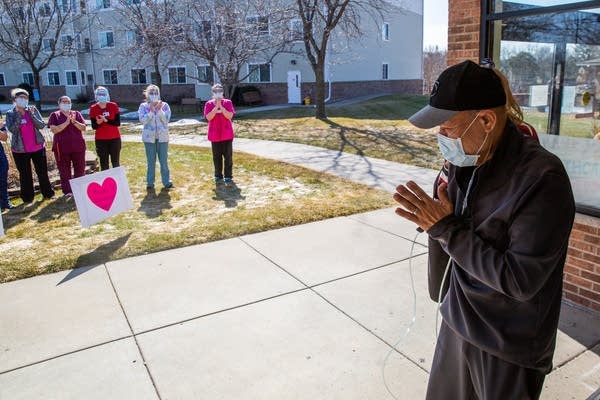‘Sick for a season’: A glimpse at the road to recovery after a difficult battle with COVID

Gabe Pastores waves to nurses outside the Hastings Health and Rehabilitation Center on March 13. Pastores spent most of the winter in the Mayo Clinic's COVID-19 intensive care unit before being discharged for rehabilitation.
Evan Frost | MPR News
Go Deeper.
Create an account or log in to save stories.
Like this?
Thanks for liking this story! We have added it to a list of your favorite stories.


